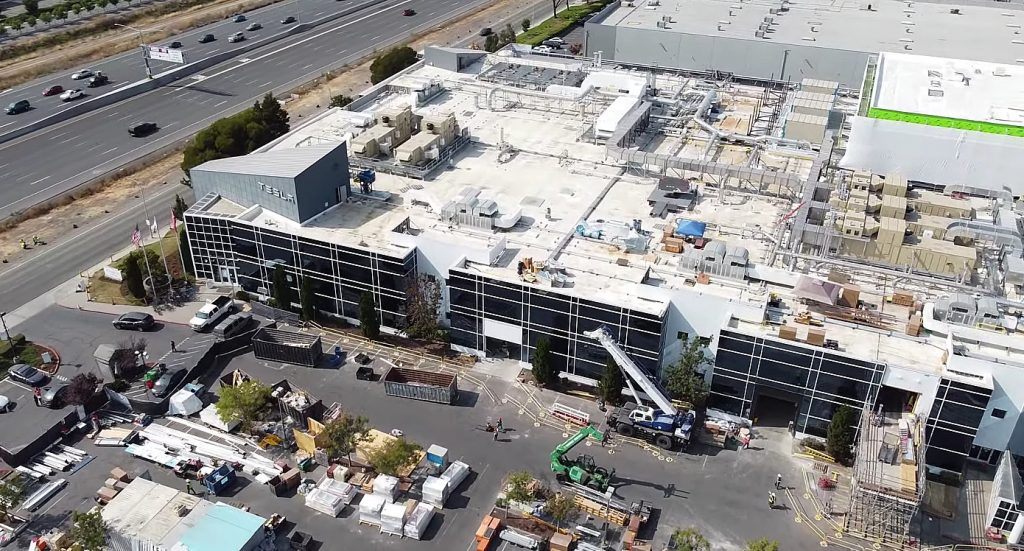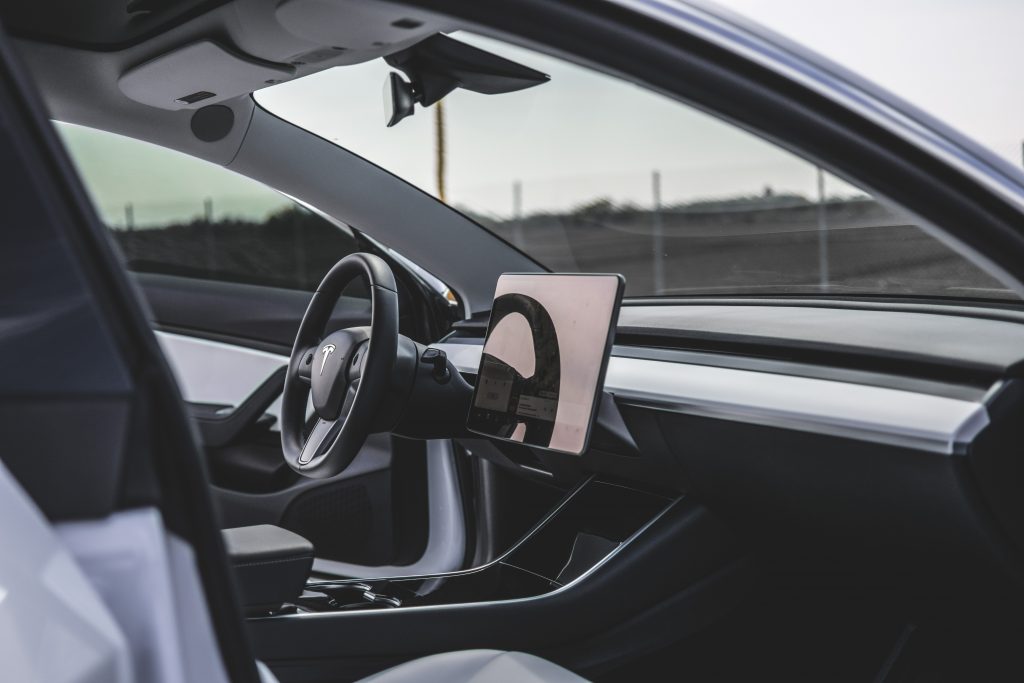The auto market has come to a point where it’s now difficult to deny that electric vehicles will be the dominant form of transportation in the near future. With companies like Tesla pushing the envelope for what electric cars can do and events such as Battery Day previewing technology that could bring EVs even closer to the mass market, it is starting to become evident that the age of electric cars is coming ahead of schedule.
The electric vehicle segment has shown remarkable strength, with EVs in Europe growing even as the rest of the automotive segment collapses under the pandemic. Part of this is due to the prices of electric cars coming closer to the cost of their internal combustion-powered counterparts. Vehicles such as the Tesla Model 3 have also proven that there is a legitimate demand for well-designed, reasonably-priced electric vehicles.
Electric cars have transitioned from niche vehicles into mass-market family cars in the span of about 12 years, and over this time, EVs and the cost of producing them have decreased significantly. This is most evident in the production costs of electric cars’ batteries. Current battery packs for EVs today are estimated to cost around $150-$200 per kWh. That’s about 80% lower than the cost of batteries since 2008.

With electric vehicles expanding into the mainstream market, the automobile industry is now approaching a tipping point when EVs could become as cheap as their fossil fuel-powered counterparts, even without government subsidies. And just as it is with any disruptive shift, the carmaker that reaches or exceeds price parity with the internal combustion engine first will be poised to dominate the segment.
Thanks to the efforts of companies like Tesla, electric vehicle technology is progressing faster than expected. As noted in a New York Times report, industry experts a few years ago were estimating that the turning point for EVs and their tech would come in 2025. But with automakers like Tesla pushing the envelope and events such as Battery Day potentially revealing technology that could push electric cars past the internal combustion engine, this 2025 estimate may end up being conservative.
Carnegie Mellon University associate professor Venkat Viswanathan, who closely follows the battery industry, described how the electric vehicle market is on an accelerated timeframe. “We are already on a very accelerated timeline. If you asked anyone in 2010 whether we would have price parity by 2025, they would have said that was impossible,” the professor said.

Perhaps what is truly remarkable about the rapid pace of the electric car market is the fact that EVs are still pretty much open to innovation. Batteries and electric powertrains still have a lot of room to grow, and companies like Tesla have proven that they will push the available technology as far as it could go to create the best EVs possible. This could be quite scary for traditional automakers that rely on fossil fuel-powered vehicles, since the internal combustion engine has already fully matured.
For now, the EV segment is turning into a race aimed at catching Tesla, which stands as the undisputed leader in electric cars today. The company may be a young carmaker, but its experience in electric car development is vast. Events such as Battery Day, which is expected to discuss the EV maker’s next-generation cells, have the potential to widen the gap between Tesla and its competitors even further. For traditional carmakers, it is now a matter of catching up to Tesla as fast as they could. But it won’t be easy.
In a statement to the Times, Jürgen Fleischer, a professor at the Karlsruhe Institute of Technology in southwestern Germany who is working on battery manufacturing research, noted that there will be a steep learning curve for veteran automakers that are dipping their feet into electric cars. “We have been mass-producing internal combustion vehicles since Henry Ford. We don’t have that for battery vehicles. It’s a very new technology. The question will be how fast can we can get through this learning curve?” he said.

Elon Musk
Elon Musk’s X will start using a Tesla-like software update strategy
The initiative seems designed to accelerate updates to the social media platform, while maintaining maximum transparency.

Elon Musk’s social media platform X will adopt a Tesla-esque approach to software updates for its algorithm.
The initiative seems designed to accelerate updates to the social media platform, while maintaining maximum transparency.
X’s updates to its updates
As per Musk in a post on X, the social media company will be making a new algorithm to determine what organic and advertising posts are recommended to users. These updates would then be repeated every four weeks.
“We will make the new 𝕏 algorithm, including all code used to determine what organic and advertising posts are recommended to users, open source in 7 days. This will be repeated every 4 weeks, with comprehensive developer notes, to help you understand what changed,” Musk wrote in his post.
The initiative somewhat mirrors Tesla’s over-the-air update model, where vehicle software is regularly refined and pushed to users with detailed release notes. This should allow users to better understand the details of X’s every update and foster a healthy feedback loop for the social media platform.
xAI and X
X, formerly Twitter, has been acquired by Elon Musk’s artificial intelligence startup, xAI last year. Since then, xAI has seen a rapid rise in valuation. Following the company’s the company’s upsized $20 billion Series E funding round, estimates now suggest that xAI is worth tens about $230 to $235 billion. That’s several times larger than Tesla when Elon Musk received his controversial 2018 CEO Performance Award.
As per xAI, the Series E funding round attracted a diverse group of investors, including Valor Equity Partners, Stepstone Group, Fidelity Management & Research Company, Qatar Investment Authority, MGX, and Baron Capital Group, among others. Strategic partners NVIDIA and Cisco Investments also continued support for building the world’s largest GPU clusters.
News
Tesla FSD Supervised wins MotorTrend’s Best Driver Assistance Award
The decision marks a notable reversal for the publication from prior years, with judges citing major real-world improvements that pushed Tesla’s latest FSD software ahead of every competing ADAS system.

Tesla’s Full Self-Driving (Supervised) system has been named the best driver-assistance technology on the market, earning top honors at the 2026 MotorTrend Best Tech Awards.
The decision marks a notable reversal for the publication from prior years, with judges citing major real-world improvements that pushed Tesla’s latest FSD software ahead of every competing ADAS system. And it wasn’t even close.
MotorTrend reverses course
MotorTrend awarded Tesla FSD (Supervised) its 2026 Best Tech Driver Assistance title after extensive testing of the latest v14 software. The publication acknowledged that it had previously criticized earlier versions of FSD for erratic behavior and near-miss incidents, ultimately favoring rivals such as GM’s Super Cruise in earlier evaluations.
According to MotorTrend, the newest iteration of FSD resolved many of those shortcomings. Testers said v14 showed far smoother behavior in complex urban scenarios, including unprotected left turns, traffic circles, emergency vehicles, and dense city streets. While the system still requires constant driver supervision, judges concluded that no other advanced driver-assistance system currently matches its breadth of capability.
Unlike rival systems that rely on combinations of cameras, radar, lidar, and mapped highways, Tesla’s FSD operates using a camera-only approach and is capable of driving on city streets, rural roads, and freeways. MotorTrend stated that pure utility, the ability to handle nearly all road types, ultimately separated FSD from competitors like Ford BlueCruise, GM Super Cruise, and BMW’s Highway Assistant.
High cost and high capability
MotorTrend also addressed FSD’s pricing, which remains significantly higher than rival systems. Tesla currently charges $8,000 for a one-time purchase or $99 per month for a subscription, compared with far lower upfront and subscription costs from other automakers. The publication noted that the premium is justified given FSD’s unmatched scope and continuous software evolution.
Safety remained a central focus of the evaluation. While testers reported collision-free operation over thousands of miles, they noted ongoing concerns around FSD’s configurable driving modes, including options that allow aggressive driving and speeds beyond posted limits. MotorTrend emphasized that, like all Level 2 systems, FSD still depends on a fully attentive human driver at all times.
Despite those caveats, the publication concluded that Tesla’s rapid software progress fundamentally reshaped the competitive landscape. For drivers seeking the most capable hands-on driver-assistance system available today, MotorTrend concluded Tesla FSD (Supervised) now stands alone at the top.
News
Elon Musk’s Grokipedia surges to 5.6M articles, almost 79% of English Wikipedia
The explosive growth marks a major milestone for the AI-powered online encyclopedia, which was launched by Elon Musk’s xAI just months ago.

Elon Musk’s Grokipedia has grown to an impressive 5,615,201 articles as of today, closing in on 79% of the English Wikipedia’s current total of 7,119,376 articles.
The explosive growth marks a major milestone for the AI-powered online encyclopedia, which was launched by Elon Musk’s xAI just months ago. Needless to say, it would only be a matter of time before Grokipedia exceeds English Wikipedia in sheer volume.
Grokipedia’s rapid growth
xAI’s vision for Grokipedia emphasizes neutrality, while Grok’s reasoning capabilities allow for fast drafting and fact-checking. When Elon Musk announced the initiative in late September 2025, he noted that Grokipedia would be an improvement to Wikipedia because it would be designed to avoid bias.
At the time, Musk noted that Grokipedia “is a necessary step towards the xAI goal of understanding the Universe.”
Grokipedia was launched in late October, and while xAI was careful to list it only as Version 0.1 at the time, the online encyclopedia immediately earned praise. Wikipedia co-founder Larry Sanger highlighted the project’s innovative approach, noting how it leverages AI to fill knowledge gaps and enable rapid updates. Netizens also observed how Grokipedia tends to present articles in a more objective manner compared to Wikipedia, which is edited by humans.
Elon Musk’s ambitious plans
With 5,615,201 total articles, Grokipedia has now grown to almost 79% of English Wikipedia’s article base. This is incredibly quick, though Grokipedia remains text-only for now. xAI, for its part, has now updated the online encyclopedia’s iteration to v0.2.
Elon Musk has shared bold ideas for Grokipedia, including sending a record of the entire knowledge base to space as part of xAI’s mission to preserve and expand human understanding. At some point, Musk stated that Grokipedia will be renamed to Encyclopedia Galactica, and it will be sent to the cosmos.
“When Grokipedia is good enough (long way to go), we will change the name to Encyclopedia Galactica. It will be an open source distillation of all knowledge, including audio, images and video. Join xAI to help build the sci-fi version of the Library of Alexandria!” Musk wrote, adding in a later post that “Copies will be etched in stone and sent to the Moon, Mars and beyond. This time, it will not be lost.”










